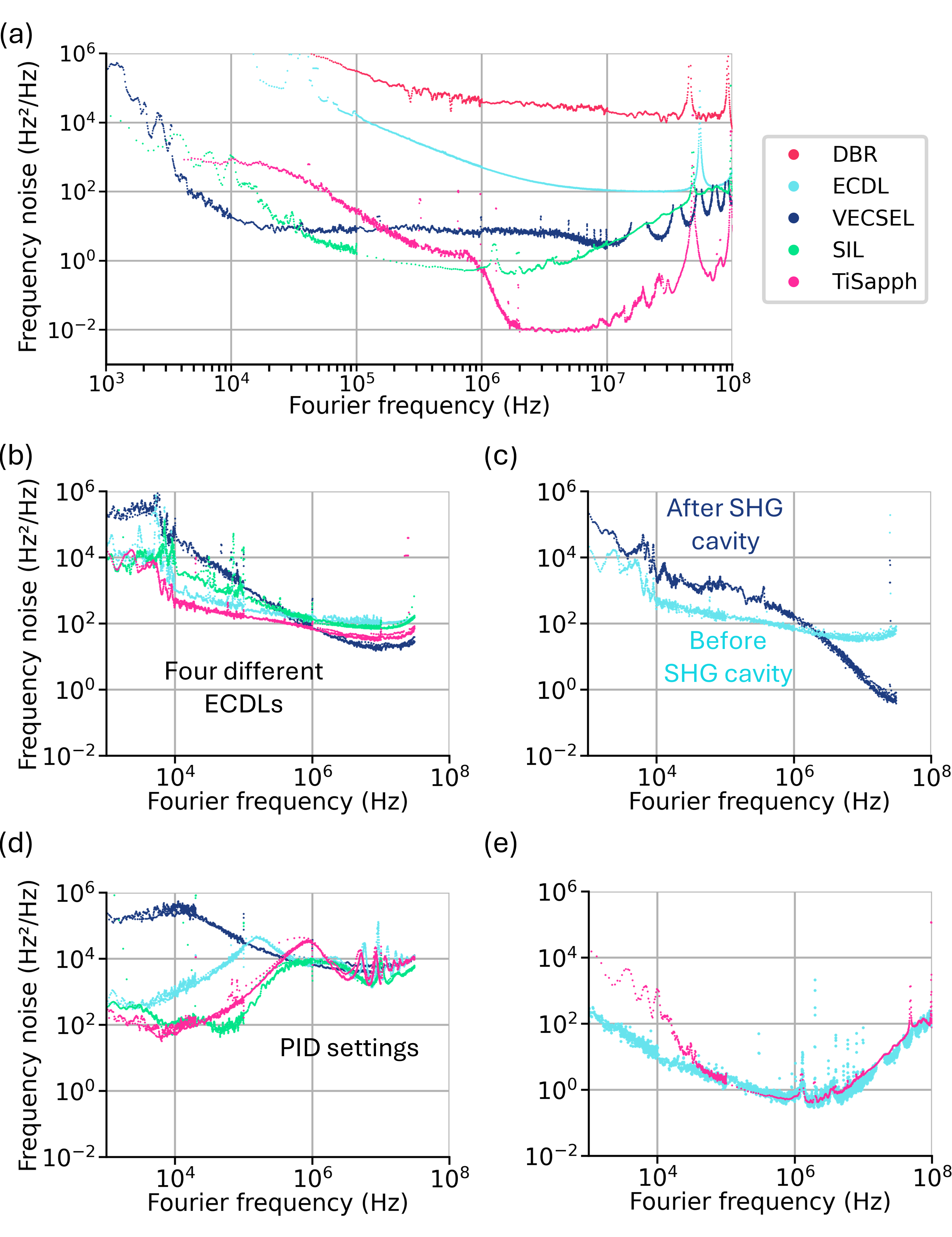This study showcases how a fiber-based feedforward system, coupled with OEwaves’ self-injection-locked (SIL) lasers, enables ultra-low phase noise critical for high-fidelity quantum manipulation.
April 26, 2025

A recent article in Arxiv by Denecker et al. presents a comprehensive study on measuring and correcting fast phase noise in lasers, specifically focusing on sub-microsecond phase fluctuations that are critical for quantum applications. The researchers developed a fully-fiberized instrument capable of detecting and correcting phase fluctuations using a feedforward correction scheme, achieving noise suppression of more than 20 dB in the 1-10 MHz frequency range where noise is most critical for Rydberg-based quantum gates. The study evaluated five different laser architectures to determine their suitability for high-fidelity quantum operations, which require frequency noise below 40 Hz²/Hz for effective quantum gate operations.
The OEwaves Self-Injection-Locked (SIL) laser served as one of the five laser architectures systematically evaluated for quantum application suitability. The researchers conducted rigorous performance measurements to determine each laser's frequency noise characteristics and their potential for meeting quantum computing requirements.
Performance Metrics:
OEwaves also provided the commercial phase noise analyzer (OE4000) used for measurement validation and comparison. This instrument demonstrated excellent performance characteristics that complemented the researchers' home-made measurement systems.
Technical Specifications:
The researchers definitively concluded that the OEwaves SIL laser represents the superior semiconductor-based laser option for quantum applications. It demonstrates performance that is 100-10,000 times better than traditional semiconductor alternatives like ECDLs and DBR lasers.

The study explicitly identified the OEwaves SIL laser as meeting quantum computing requirements. The researchers categorized it among "novel designs that recently reached commercialization" that "could pass the requirement" for quantum applications.
The authors validated the fundamental technological merit of the SIL approach by explaining its superior performance mechanism. The self-stabilization when coupled to a high-Q resonator represents a significant advancement over traditional semiconductor laser designs.
The research highlighted the OEwaves SIL laser's advantages in terms of size, weight, power, and cost (SWaP-C) characteristics compared to bulk cavity solid-state lasers. This makes it a practical alternative that bridges the performance gap between traditional semiconductor lasers and expensive solid-state alternatives.
The study demonstrated excellent agreement between measurements taken with the commercial OEwaves OE4000 analyzer and the researchers' home-made Mach-Zehnder interferometer systems. This validation occurred across the frequency spectrum except in the 10 kHz range where the home-made MZI exhibited excess noise. This cross-validation strengthened the credibility of both measurement approaches and confirmed the accuracy of the SIL laser performance characterization.
OEwaves technology received comprehensive evaluation that led to specific conclusions about its technological merit and practical applications. The researchers determined that the SIL laser represents a viable solution for quantum applications requiring high-fidelity laser control while maintaining the practical advantages of semiconductor-based architectures. The study positioned the OEwaves SIL laser as a preferred choice for practical quantum computing implementations that require stringent phase noise performance. With frequency noise well below the 40 Hz²/Hz threshold needed for high-fidelity quantum gates, it offers a commercially viable alternative to more expensive solid-state laser systems. The study provided implicit endorsement of the OEwaves SIL laser technology as representing significant technological advancement in semiconductor laser design. The combination of superior performance, commercial availability, and turnkey, compact implementation positions it as a recommended solution for quantum applications requiring both high performance and practical deployment considerations.
Read the full article here.